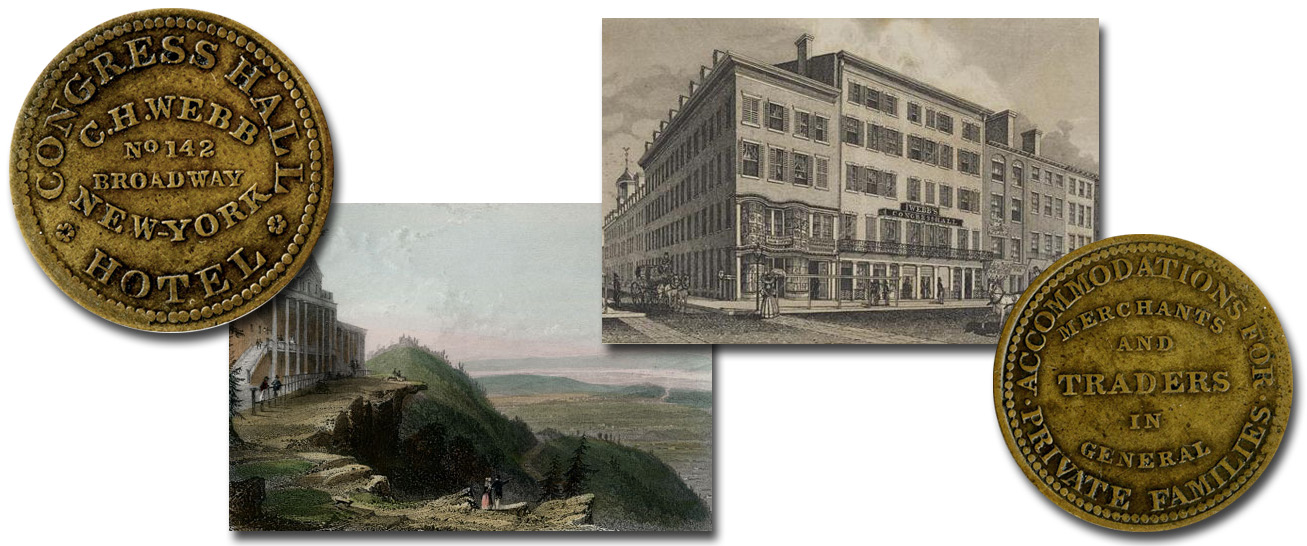
As you read these words, I am putting the finishing touches on A Guide Book of Hard Times Tokens, to be published in 2015 by Whitman. I began this project in the 1970s, and have been working on it ever since. It is within a few months of completion.
In doing this I have studied several hundred tokens and their issuers for the period from 1832 to 1844, which was defined by Lyman H. Low in his Hard Times Tokens book as being the Hard Times era. In actuality difficult economic times began around 1834 and went into high gear with the Panic of 1837. These troubles did not pass until the spring of 1843.
Along the way I have been gathering history, images when available, and other information about issuers. One such issuer is Charles H. Webb, who in the 1820s and 1830s operated the Catskill Mountain House, a favorite resort. He expanded his horizons and acquired buildings in New York City and tied them together under the name of the Congress Hall Hotel, only to find that someone else had used the name, although he had announced his intentions earlier. He then altered it to become Webb’s Congress Hall Hotel, which seems to have operated successfully for a time. It opened in 1832. Webb issued tokens, available easily enough today, to advertise his hotel.
Accompanying my present commentary is a picture of his Mountain House in Catskill, Webb’s Congress Hall Hotel in New York City, and a picture of a token from the Stephen L. Tanenbaum estate. The token is well worn and probably saw service in circulation in and around New York City for a decade or more. This prompted me to reflect on its grade and desirability. Of course, a similar token in Mint State (not known to exist, by the way) would probably be better to own than the illustrated piece. However, the chances are fairly good that the token you are viewing was handled by Mr. Webb himself, countless patrons of his hotel, and has “been there and done that” in service in New York City, giving it a special desirability.
Hard Times tokens, quite unlike federal series, were not desired by numismatists at the time they were issued, with only one known exception, Mr. Henry Davenport of Boston. Accordingly, finding such tokens in Mint State is virtually impossible for many of them, and for some the finest known grade is Fine or Very Fine. A parallel can be drawn with the state copper coinages of Vermont, Connecticut, New Jersey and Massachusetts for the years 1785 to 1788. These were produced, used in circulation, and today there are rarities that are in grades no better than Good or Very Good. If they were all available in Gem Mint State or Proof, and readily tradable on the marketplace, probably much of the passion of collecting would be gone.
These comments may help explain why for certain specialized series circulated examples are highly desired and exciting to own, as here.





